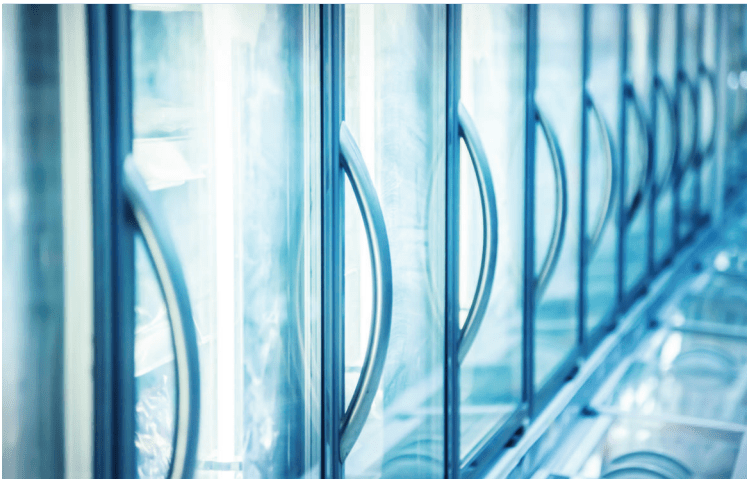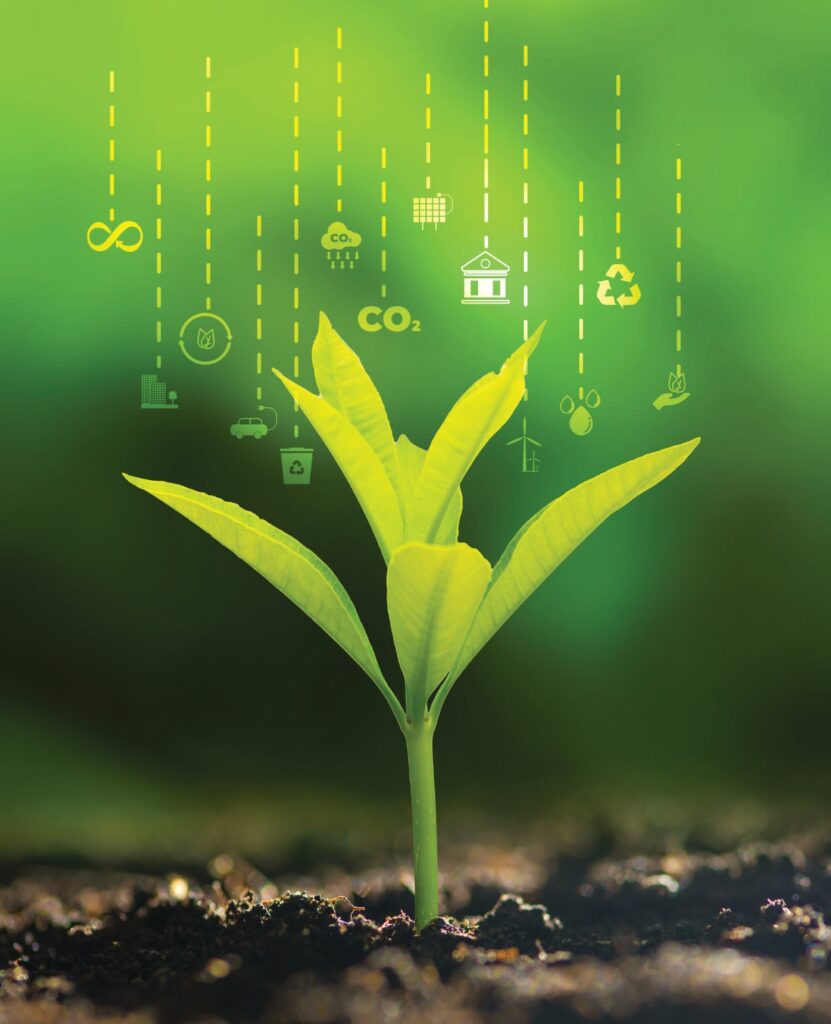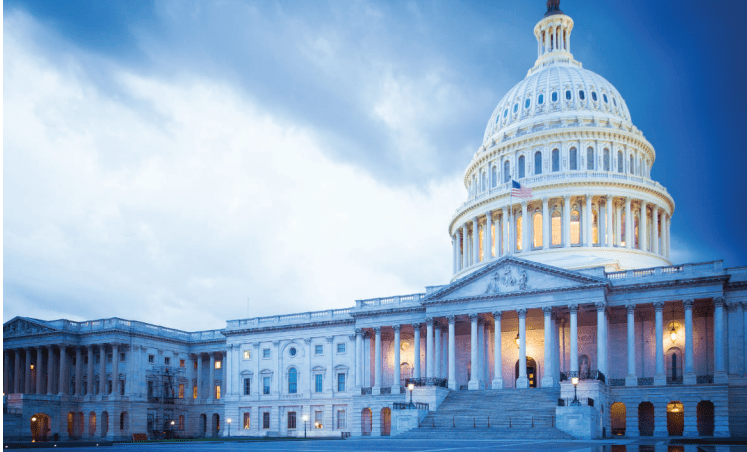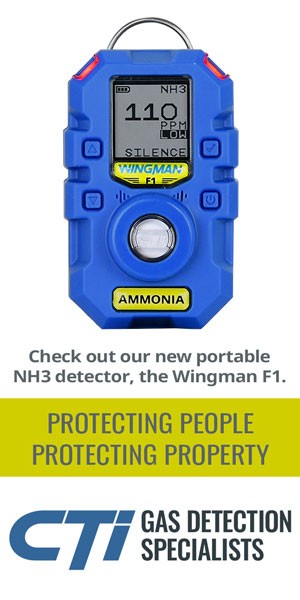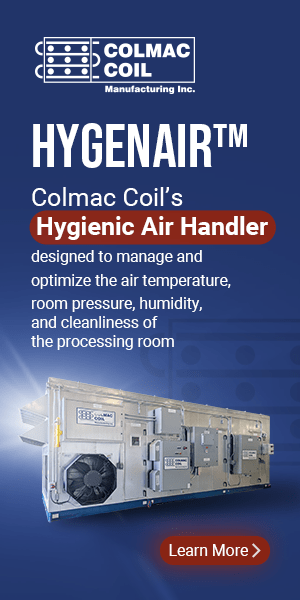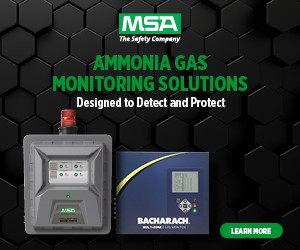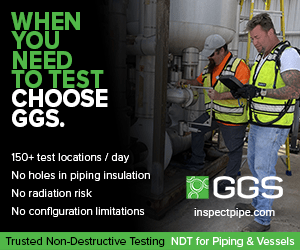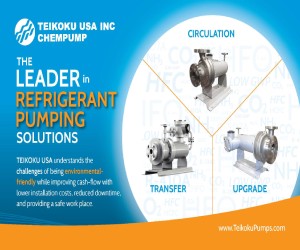IIAR State Of The Industry Report
ABSTRACT
The 8th edition of the State of the Industry Report has evolved to include more information from IIAR Survey questions and observations of industry leaders. Emerging information on regulatory and training developments and IIAR’s influence on the industry continues to grow.
IIAR’s efforts in standards development, advocacy, and the government relations sector are more important than ever. IIAR has expanded on the challenges faced by end-users in the industry, the state of government relations with IIAR, and the educational resources of IIAR. Continuing in tradition is a preface from the Chair of the Board of Directors, Mike McGinnis.
PREFACE
Education, training, and advocacy have always been the cornerstone of IIAR’s volunteer-led work on behalf of our industry, and 2025 was no exception. As you will see from reading this comprehensive report, IIAR’s vision and mission are more important than ever.
The natural refrigeration industry has led the effort to train generations of new technicians, operators, and managers on ammonia systems. Now, this backbone of training infrastructure is in the right place at the right time to propel the widespread adoption of natural refrigerants.
I’m especially excited by the new IIAR collaboration with the IIR, the International Institute of Refrigeration, which has signed a memorandum of understanding to work together to promote natural refrigerants around the world.
As technology grows and the need for IIAR training and education becomes ever more important, the work we started at IIAR has truly become a global effort championed by organizations in dozens of countries.
And here in the U.S., IIAR is focused on building the talent pool of a new generation of professionals with incentives for new talent to enter the industry. IIAR expanded its scholarship program, adding more scholarship recipients in 2024 and 2025.
We must reinvest on the educational side now for the future of our industry and driving that additional awareness of IIAR’s scholarship program has really helped us grow our organization and get new engineers into the industrial refrigeration market, through education and advocacy.
Expanding our presence in Latin America, where IIAR standards and training are in demand, was another important goal in 2024 and a challenge that IIAR was more than capable of meeting. Last year, participation in IIAR Spanish-language training was close to 20%, representing a significant growth from past years.
As always, it is the time, enthusiasm and dedication of our many committees and all our volunteer members that makes the work of our organization possible.
Whether it’s the hard work of standards development, training development, or the task of advocating on behalf of our industry, I would like to thank you all for your interest in this important work and for your effort in making our industry as safe as it can be.
Sincerely,
Mike McGinnis
2024-2025 IIAR Chairman
INTRODUCTION
The American Innovation and Manufacturing (AIM) Act continues to change our industry, and the anticipated elimination of certain refrigerants as well as new considerations like perfluoroalkyl (PFAS) regulations, are reshaping the way natural refrigerants are considered – for everything from environmentally sustainable policies to new technologies.
Meanwhile, the conflicting dynamic between natural refrigerants and synthetic refrigerants will continue to be an important topic of discussion in 2025.
As the industry looks toward more uses for natural refrigerants, it is becoming apparent that the educational resources and training opportunities provided across the industry will be in higher demand, especially in places like Latin America.
Alongside a broader base of training, the emphasis on energy efficiency will continue to expand as the industry tries to apply new ways to make systems more efficient – to new and legacy systems alike.
Throughout all of these challenges and opportunities, IIAR remains diligent in its efforts to support its existing members. By providing educational offerings and benefits while also reaching out to new members, IIAR, its committees, and its membership will draw more expertise to our industry and tap new markets for natural refrigerants in 2025.
MEMBERSHIP UPDATE
IIAR has over 4,000 members from more than 40 countries around the world and members of IIAR include design engineers, end users, contractors, students, scientists, and trainers. Alliance organizations in Asia Pacific, Europe, Latin America, North America, and Australia continue to make global outreach a hallmark mission.
The new membership structure, introduced in 2022, continues to provide free access to the e-Library, member directory, and an eKIT of all IIAR standards, including current and past revisions, delivered via an e-reader service and online webinars. IIAR is encouraging members to take advantage of the two (2) free IIAR Academy of Natural Refrigerants certificate courses available per member per year and the three (3) free IIAR Training Video Series available per member per year.
Additional benefits, such as eligibility for listing in the Natural Refrigeration Directory, are exclusive to Group Company Membership holders. Members receive a discount for purchasing published electronic and hard copies through the IIAR website. Meanwhile, IIAR continues to expand global awareness of natural refrigerants through the Condenser magazine – which is marking one year of online readership – with additional search features on all published articles. For more information, please see the Member Benefits page.
REFRIGERANT CONSIDERATIONS
IIAR continued to take a strong position defending natural refrigerants in 2024, releasing the IIAR Refrigerant Evaluator Tool to help IIAR members and others assess their refrigerant choices and evaluate their options. The timing of the release coincides with the Environmental Protection Agency phaseout of high global warming potential refrigerants.
The Refrigerant Evaluator Tool is designed to be used as a comparison tool for the performance and efficiency of different refrigerants and illustrates the comparative benefits of natural refrigerants.
For decision makers in industrial refrigeration currently using synthetic refrigerants, the evaluator tool will raise awareness of the regulatory and environmental challenges facing synthetics in the coming years while providing practical information on all refrigerants.
For more information on natural refrigerants and considerations for using them, please see the IIAR Refrigerant Evaluator Tool.
Meanwhile, as part of the Environmental Protection Agency’s Significant New Alternatives Policy (SNAP) rule, the charge limits for R290 (propane) were raised in 2024, a development that opens the door for natural refrigerants in industrial and residential commercial use.
Alongside that new development, EPA’s HFO/ HFC phasedown schedule continues with January 2025’s latest major deadlines. The Final Technology Transitions Rule lays out a phasedown schedule and is largely consistent with the policies recommended by IIAR. The Final Technology Transitions Rule restricts higher-GWP HFCs in new aerosol, foam, refrigeration, air conditioning, and heat pump (RACHP) products and equipment. EPA has listed entities potentially impacted by the rule to include companies that manufacture, import, export, package, sell, or otherwise distribute products that use or are intended to use HFCs, such as refrigeration and airconditioning systems, heat pumps, foams, and aerosols.
REFRIGERANT CONSIDERATIONS
EDUCATION NEEDS
As new regulations push much of the refrigeration industry towards natural refrigerants and hydrocarbons, and new technologies like innovations in CO2 equipment open doors to wider adoption, training and education are more important than ever.
The natural refrigeration industry has led the effort to train generations of new technicians, operators, and managers on ammonia systems. Now, this backbone of training infrastructure is in the right place at the right time to propel the widespread adoption of natural refrigerants.
From onsite training provided by manufacturers and end-users to formal training provided by industry groups – like IIAR, the University of Wisconsin’s Industrial Refrigeration Consortium, the Refrigeration Service Engineers Society and the Refrigerating Engineers & Technicians Association – training and education across the industry is ramping up to meet new demands.
At IIAR, several new training programs are underway. This year, IIAR continued its new onsite regional training program in Alaska and collaborated with RETA to deliver its first standard certification course directly to RETA members.
IIAR’s remote workshops were designed to introduce industry newcomers to safety standards and encourage in-person interaction with industry experts. The workshops, held in collaboration with IIAR member Trident Seafoods, delivered information on the IIAR Suite of Standards and the Safety Standard for Carbon Dioxide, plus an update on the Safety Standard in development for using hydrocarbon refrigerants. The training included an overview of the General Duty Clause and enforcement awareness, the differences between PSM and RMP requirements, ammonia transfer and permanent hoses, and mechanical integrity, inspection, testing, and maintenance.
IIAR’s standards effort is also keeping pace, with a new hydrocarbon standard slated for release in 2025, while the recent merger of the Refrigerating Engineers & Technician’s Association (RETA) and the Refrigeration Service Engineers Society (RSES) will give RETA the ability to expand an existing RSES hydrocarbon training course, according to leaders of the two organizations.
RETA’s decision to offer training in both CO2 and hydrocarbon systems for residential and commercial markets illustrates how quickly the foundation of training is expanding across the industry. As CO2 and hydrocarbon use continue, training needs for these systems will also grow as demand increases for greater institutional knowledge and more trained workers.
Meanwhile, training and education are deepening across the industry, including at the IIAR annual conference, where the technical program has been expanded to include “technical tracks” for the first time. The new technical tracks represent a broader examination of technical material from each facet of the industry.
As education and training expands to help the industry respond to regulatory changes and growth, the need for new technicians – and incentives for new talent to enter the industry – is also growing. IIAR expanded its scholarship program, adding more scholarship recipients in 2024 and 2025.
Generally, expanded training can be seen as a way to remove one more roadblock or excuse for not using natural refrigerants – by increasing technician familiarity with a specific kind of system. And by laying the groundwork for institutional knowledge that may not yet exist. One example of this is low-charge hydrocarbon equipment, where U.S. codes have not traditionally allowed for volume use in commercial or larger residential applications.
The benefits of making broader training available on these less used, but growing systems are often the same as traditional ammonia systems. Employees who operate or maintain a refrigeration system need more advanced training on system operating and maintenance procedures.
Employees need to know how to do their jobs safely, and the amount of training they require can vary depending on their tasks.
At most facilities, management decides who receives more advanced training, but broader training and general education are useful for any worker in proximity to a refrigeration system, including roundsmen, operators, mechanics, technicians, electricians, contractors, engineers, and various management roles.
As CO2 and hydrocarbon systems begin to represent a new area of growth for natural refrigerants, it is vital that the industry responds with robust training and educational resources –beyond those offered by manufacturers alone. The new educational resources currently available from a variety of professional organizations, private companies, and professional trainers across the industry will play a vital role in the growth of natural refrigerants in the coming years.
CURRENT EVENTS
The American Innovation and Manufacturing Act continues to be the most influential recent development in the domestic industrial, commercial, and residential refrigeration industries. To keep pace with the growing adoption of natural refrigerants in the U.S. and around the world, IIAR is working to extend training, standards, and education. IIAR, working with other industry groups, continues to solidify a presence for natural refrigerants around the world.
Meanwhile, new technologies and equipment innovations are opening up possibilities for naturals in new markets, while industry consolidation continues to be a growing trend rounding out a list of the most important current events in 2024.
AIM Act Advocacy
Building awareness of the American Innovation and Manufacturing (AIM) Act continues to be a top priority for IIAR, which has created several resources to help promote it.
The AIM Task Force continues to support IIAR in its objectives to provide advocacy and education for natural refrigerants in all industries. An informational page, What is the AIM Act?, https://www.iiar.org/IIAR/IIAR/Government_and_Code/What_is_the_AIM_Act. aspx?hkey=ff049aa4-247a-40b1-8867-d3ae05a2be7b on the IIAR website was established to provide updated AIM Act news and developments.
Global Influence
The global growth of natural refrigerants has been aided by IIAR’s many strong alliances with government groups and associations in every part of the world, where IIAR works to make safety standards and training available. IIAR’s global alliances include those listed on the Alliances webpage.
Many countries are working to adopt IIAR standards, demonstrating a larger worldwide trend towards natural refrigerants. Latin America, in particular – where growing natural refrigerant adoption is creating a demand for training – is a special area of focus for IIAR.
IIAR standards and training are filling an information void in many Latin American countries where IIAR membership is increasing. Meanwhile, IIAR’s Spanish-language Academy of Natural Refrigerants courses are seeing increased participation, and local IIAR chapters are delivering IIAR conference events in several countries.
IIAR had a successful three-day conference and expo in Guadalajara, Mexico, in August 2024, with 14 countries participating and a record number of attendees, including a large percentage of end-users and contractors. The Mexico event followed an event in Ecuador in April 2024 and preceded an event in Costa Rica in November 2024. IIAR’s next Latin American conference in Peru will be held the first week of June 2025, and the next conference in Mexico will take place in 2026.
Technology Trends
The race to reduce greenhouse gas emissions continues to open new markets for natural refrigerants and drive new technology evolutions. Industry leaders are looking to these new evolutions as they consider the expanding applications for natural refrigerants.
Those new applications are rapidly changing and evolving, not just in food manufacturing, but also in data centers, commercial applications and other industries, all of which are currently eyeing natural refrigerants.
To fight climate change, the traditional users of natural refrigerants will increasingly push boundaries and share the success stories of moving into new markets – as they shift the possibilities of the available technology.
In Europe, the CO2 market is well ahead of the United States, but as technology adoption grows, the U.S. could follow the European trend towards CO2 evaporative condensers.
Advancements in products available on the CO2 side of the industry like larger compressor components could open up more industrial opportunity for CO2 in the U.S., while CO2 injector technology could open the door to higher efficiencies.
Meanwhile, one of the biggest changes driving the new adoption of naturals may be as simple as growing public awareness of their use. While some high-profile end-uses, such as commercial, cold storage, and ice rinks, are well on their way to switching to naturals, other sectors, such as residential refrigerators or wine chillers – which mostly use isobutane – are already there.
Industry Dynamics
The refrigeration industry again experienced several notable mergers and acquisitions in 2024, with Johnson Controls acquiring M&M Carnot and Danfoss acquiring BOCK GmbH, a provider of CO2 and low-GWP compressors utilized in cooling and heating applications. Evapco joined the list of companies that expanded its offerings through acquisition with the purchase of Systèmes LMP to form the subsidiary Evapco Systems LMP. Meanwhile, Lineage Logistics went public in the biggest IPO in 2024.
The trend towards consolidation in the industrial refrigeration industry mirrors that of the overall economy – with increased market concentration and fewer individual companies. Companies cited the acquisition of new technologies, such as heat pumps, or tailored solutions for new markets, such as data centers, as the driving force behind 2024’s consolidations. Traditional factors driving acquisitions – such as expanding engineering expertise and beefing up customer support resources, were also cited.
Speculation on why consolidation is continuing ranges from a perceived willingness of banks to fund green initiatives to investor visions of larger margins with the establishment of larger companies.
New Applications
New applications for naturals were in the headlines in 2024, with several new technologies making their debut.
Volkswagen said it is developing a new in-house designed R744 heat pump refrigerant and coolant thermal module, while energy management supplier Hanon Systems announced the company is supplying its R744 heat pump components to the Volkswagen Group for its global MEB platform. Hanon said the heat pump components were designed specifically for batterypowered and electric vehicles.
Meanwhile, Chinese automaker GAC, working with Toyota, unveiled a combustion engine that runs on liquid ammonia as an alternative to traditional fuels.
The maritime industry also considered ammonia as a fuel, with the Maritime Safety Committee – a key technical body of the International Maritime Organization – approving interim guidelines for the safe use of ammonia as a marine fuel in 2024.
REGULATORY AND IIAR STANDARDS UPDATE
The American Innovation and Manufacturing (AIM) Act continued to influence everything from IIAR standards creation to regulatory advocacy in 2024 and into the beginning of 2025. The AIM Act, which was enacted on December 27, 2020, authorized the EPA to address hydrofluorocarbons (HFCs) in three areas: (1) Phasing down HFC production, (2) Facilitating the transition to next-generation technologies through sector-based restrictions and (3) Regulating to minimize HFC releases and maximizing reclamation efforts.
With the third rule enacted in 2024, the EPA has focused on reducing the leakage from existing refrigeration systems.
This third rule is notable in that it applies to existing refrigeration systems, whereas all other rules and most EPA regulatory actions apply only to new or expansion applications. The Leak Repair regulations will take effect in 2026, forcing all owners with substantial refrigeration systems to act to identify and repair sources of leaks that reduce the charge of refrigerant in their operating systems.
Meanwhile, the new EPA Risk Management Program Safer Communities by Chemical Accident Prevention Rule will be a big focus for IIAR again in 2025. The rule includes additional RMP requirements regarding third-party audits where a reportable release occurred, root cause analysis, emergency response, and information availability. Keeping hot work permits on file for a minimum of three years and ensuring your ammonia detection system and alarm has a method to address the monitoring if a power outage were to occur.
The EPA’s RMP Reconsideration Final Rule Fact Sheet has been in effect since 2019, and it’s important to note that the annual notification drills in coordination with emergency responders and field exercises must be done, and Emergency Plan Notification Exercises were due in 2024.
RMP is expanding the federal requirements for emergency tabletops and drills. Tabletop exercises are due by December 21, 2026 while field exercises are due before March 15, 2027. The scope and frequencies of these notifications and exercises are written in the regulations.
IIAR will continue its focus on building standards, with the expected release of a hydrocarbon standard in 2025 – IIAR HC, Safety Standard for Closed-Circuit Refrigeration Systems Utilizing Hydrocarbon Refrigerants).
The hydrocarbon standard broadens the knowledge base of available natural refrigerants, while the AIM Act accelerates the use and consideration of natural refrigerants with zero ozone-depleting potential and zero or ultra-low global warming potential.
The IIAR hydrocarbon standard has been written to address larger closed-circuit refrigeration systems that use natural hydrocarbons as the refrigerant. The systems being considered are beyond the size of the presently approved SNAP-listed equipment and systems. IIAR hopes that the EPA will consider the standard as a basis for expanding the SNAP approval listings for natural hydrocarbon refrigerants. The IIAR hydrocarbon standard includes specific design, installation, and startup, as well as inspection, testing, maintenance, decommissioning, and general safety equipment.
The current draft of the standard covers the use of propane, butane, and isobutane in refrigeration applications, with the potential to add a few other hydrocarbons at a later date. The standard has exceptions for listed systems and those systems for use in chemical and petrochemical applications. Listed systems are those built to UL standards, currently utilizing less than 150 grams of refrigerant per circuit, which has recently increased systems up to 300 to 500 grams, pending if they have doors, drawers, open cabinets, and refrigerant detection and ventilation at the high end. These listed systems are considered appliance-sized or grocery-sized units.
For systems utilizing larger refrigerant quantities than those covered by the UL standards (i.e., listed: equipment that has been tested and is identified as acceptable by an approved, nationally recognized testing laboratory), the standard recommends that the refrigerant containing equipment should be installed in a machinery room or outdoors. A secondary refrigerant would be used to transfer heat from the source to the hydrocarbon equipment.
The natural hydrocarbon refrigerant, which remains in the machinery room, can be used as the primary refrigerant in a cascade system and, or, for secondary systems that can chill and circulate a secondary fluid, such as a natural refrigerant like CO2, brine, or glycol. The secondary fluid can be used for heating or cooling. In addition to the hydrocarbon standard, IIAR standards 5, 6, and 7 will be released in 2025 after public reviews and updates. Next, IIAR 4 and IIAR 8 will be opened up for review and revision as well in 2025. The Safety Standard for Carbon Dioxide is targeting an Addendum in 2025 to address updating the safety device capacity sections. IIAR 9 will open up in mid-to-late 2025 for its review and revision as well. While IIAR 4 through 9 will undergo fewer updates, IIAR 6 will require the most updates from its original edition. IIAR 2 is now open for reviewing the future revision considerations that were captured first, then considering new recommendations before it goes out for its first public review. The IIAR 2 revision is anticipated to be completed no later than sometime in 2026. IIAR continues to monitor government programs that impact the use of all refrigerants.
IIAR also continues to make government agencies aware of the benefits of ammonia and other natural refrigerants for their viability and potential for future use. For more information on government programs, please go to www.iiar.org/governmentandcode.
INDUSTRY DYNAMICS
Factors influencing growth are developing rapidly, with several trends indicating a broader industry shift for natural refrigerants.
First among these trends is a practical focus on improving energy efficiency through heat recovery and customized refrigeration solutions. The growing integration of heat recovery systems – to capture and reuse waste heat generated during the refrigeration process – is helping facilities improve overall energy efficiency.
Customized refrigeration solutions tailored to specific food manufacturing processes are also increasingly in demand as end users look to optimize the temperature and humidity conditions for different products. Higher demand for customization may emerge as end users focus more on designing refrigeration systems with materials and features that meet high hygiene standards, which is particularly important in food manufacturing.
Meanwhile, several less-defined trends may be pointing to the broader adoption of natural refrigerants: the transition from HFC chillers to CO2-based systems is becoming common in industrial applications; HVAC&R contractors are installing and servicing natural refrigerant systems; various global entities are aiming to phase out synthetic refrigerants and reduce environmental impact; and corporate commitments to reducing greenhouse gas emissions by incorporating natural refrigerants are growing.
The continued challenge for end users adopting natural refrigerants is the public perception of widely used refrigerants, which may be variable due to a lack of widespread knowledge of the pros and cons of all refrigerants. In addition, the cost of regulatory compliance is a driver for decision-making for companies and the refrigerants they select to use. As regulations become more complex and expand to new chemicals, the pressure grows to find refrigerants that meet those regulations and do not present significant costs.
IIAR has created and maintained a Government Support Portal to help the industry understand these pressures. The portal allows access to IIAR’s most current standards as well as the basic Ammonia Refrigeration and Safety Series to Regulatory agents and officers.
IIAR EDUCATIONAL RESOURCES
In a year of greater emphasis on climate change, new regulations, and energy efficiency, IIAR harnessed the focus on environmentally sustainable technologies to draw attention to natural refrigerants. IIAR delivered over 40 presentations and webinars and facilitated discussions with industry groups and regulators, including:
- Virtual presentations completed for the Refrigerating Engineers & Technicians Association (RETA).
- Live presentations and IIAR Standards training at the RETA Conference.
- IIAR training workshop hosted by Trident Seafoods.
- Continued updates and delivery of IIAR webinars.
- Educational events were delivered in Mexico, Ecuador, and Costa Rica.
- Multiple presentations and facilitated discussions of enforcement awareness and General Duty Clause requirements to ensure that facility owners identify hazards using appropriate hazard assessment techniques no matter the size of the ammonia refrigeration system.
- Multiple presentations and facilitated discussions pertaining to progress in natural refrigeration codes and standards, including ammonia, carbon dioxide, and hydrocarbons.
- Continued participation in the EPA’s Green Chill group activities, including delivering updates on the progress made in natural refrigerants, including ammonia, carbon dioxide, and hydrocarbons.
IIAR has also expanded its educational content and offerings to include online and on-demand education resources through the IIAR Learning Management System (LMS). This online resource has been critical in helping IIAR achieve its mission of education and training via a virtual medium.
Another resource, the Refrigerant Evaluator Tool, was released in 2024 to be used as a comparison tool for the performance and efficiency of different refrigerants and illustrates the comparative benefits of natural refrigerants.
For decision makers in industrial refrigeration currently using synthetic refrigerants, the evaluator tool will raise awareness of the regulatory and environmental challenges facing synthetics in the coming years while providing practical information on all refrigerants.
For more information on natural refrigerants and considerations for using them, please see the IIAR Refrigerant Evaluator Tool.
IIAR continues to work with chapters and alliance partners to establish events and education offerings throughout the world via its international events.
WHERE IS THE INDUSTRY HEADED?
As environmental regulations and equipment advances propel the refrigeration industry forward in 2025, food manufacturers like Amazon and Walmart are responding by moving more vertically – with Amazon building its own cold storage facilities and Walmart taking on its own beef production.
In Europe, regulators are discussing limits on perfluoroalkyl (PFAS) substances, known as “forever” chemicals, while U.S. states follow the trend to consider PFAS bans.
European PFAS legislation is coming, and the European Union’s Registration, Evaluation, Authorization, and Restriction of Chemicals (REACH) proposal related to PFAS will be finalized in 2025. Proposed regulations in Europe would impact almost all new and current lower GWP HFC/HFO refrigerant blends.
Meanwhile, in the U.S., more than 30 states have introduced or adopted regulations related to PFAS. At the federal level, the U.S. Environmental Protection Agency has rolled out several requirements limiting PFAS, including a record-keeping and reporting rule under the Toxic Substances Control Act (TSCA).
Under the EPA requirement, any entities, including small entities, that have manufactured, including imported, PFAS in any year since 2011 will have to report PFAS data to EPA beginning in 2024. Small manufacturers will have to begin reporting in November 2025. Under this rule, civil penalties and criminal prosecutions can be levied against those who fail to report.
While PFAS regulations and supply chain changes are shaping refrigeration, the industry stands poised to make an impact through technological developments, training, and safety education in 2025. Several factors will contribute to growth again in the coming year:
Energy Efficiency: An increasing focus on energy-efficient technologies – adopted to reduce operational costs and environmental impact – will draw new groups of end users to the industry.
Thermal Systems: Interest in holistic thermal designed systems that maximize the movement of thermal energy within a building will continue to grow.
Community Benefits: Accessing the thermal energy produced by a single building and offering the thermal energy to district heating and cooling loops will yield new efficiencies.
Merging of sectors: Traditional HVAC and industrial refrigeration contractors are manufacturing and installing solutions to broader markets and, increasingly, broadening their training and inuse understanding of new technologies.
Smart Technology Integration: The use of the IoT (Internet of Things) and smart sensors – for monitoring and controlling refrigeration systems remotely – will evolve.
Automation and Artificial Intelligence: The integration of automation and AI for predictive maintenance, optimizing system performance, and minimizing downtime will grow. More automation systems are being provided in new and existing cold storage buildings to increase efficiency and profitability. And new Automated Storage and Retrieval Systems (ASRS) are now more commonly included as the basis of design for new, larger, cold storage facilities.
Digitalization and Data Analytics: Organizations will place greater emphasis on data analytics to improve efficiency, troubleshoot issues, and enhance overall system performance.
Regulatory Compliance: The industry will see a continued adaptation to evolving regulations and standards related to refrigerants, energy efficiency, and environmental impact.
Integration with Renewable Energy: As companies move towards a greater awareness of environmental responsibility, they will continue to explore ways to integrate industrial refrigeration with renewable energy sources to reduce their carbon footprint.
Modular and Flexible Designs: The industry will continue to move towards modular and flexible system designs for easier installation, scalability, and adaptability to changing needs.
Health and Safety Measures: Infrastructure security will continue to be a focus, with heightened emphasis on health and safety features, including advancements in leak detection systems, refrigerant reduction, and advanced refrigerant recovery units.
Construction Changes: New food storage and processing facilities have been increasingly installed with larger air units (evaporators). Many facilities are now built with the evaporator units outside of the cooled space with insulated penthouse units. These insulated penthouse air units are installed outside of the cooled space on the roof of the building, on the dock roof, or at the base of the building. Meanwhile, cold storage facilities are increasingly being built larger, higher in height, and longer in length.
SURVEY QUESTIONS
Each year we ask our members to participate in a survey created to serve as a year-over-year benchmark for our industry. We appreciate the response we received from past surveys. Your input has helped create the discussions in this report year-over-year. We would appreciate everyone’s feedback and look forward to hearing from more members each year.
2026 IIAR State of the Industry Survey
PARTICIPATE IN IIAR COMMITTEES
IIAR is the world’s leading advocate for the safe, reliable, and efficient use of ammonia and other natural refrigerants. IIAR members share their collective knowledge and experience to produce consensus documents that address various aspects of the natural and industrial refrigeration industry. IIAR has a broad industry representation that includes manufacturers, design engineers, contractors, end users, academics, scientists, and trainers. IIAR sets the standard for providing advocacy, education, and the most up-to-date technical information to the ammonia and natural refrigeration community. We help professionals develop their skills and further their careers by promoting the common interests of members.
A list of our committees and how to be involved is on the Committee’s webpage
ABOUT IIAR
IIAR is the world’s leading advocate for the safe, reliable and efficient use of ammonia and other natural refrigerants. IIAR members share their collective knowledge and experience to produce consensus documents that address various aspects of the natural and industrial refrigeration industry.
IIAR has broad industry representation including manufacturers, design engineers, contractors, end users, academics, scientists, and trainers. IIAR sets the standard for providing advocacy, education and the most up-to-date technical information to the ammonia and natural refrigeration community.
We help professionals develop their skills and further their careers by promoting the common interests of members.
OUR VISION AND MISSION
Our Vision
Our vision is to create a better world through the safe and sustainable use of natural refrigerants
Our Mission
Our mission is to provide advocacy, education, and standards for the benefit of the global community in the safe and sustainable design, installation and operation of ammonia and other natural refrigerant systems.








